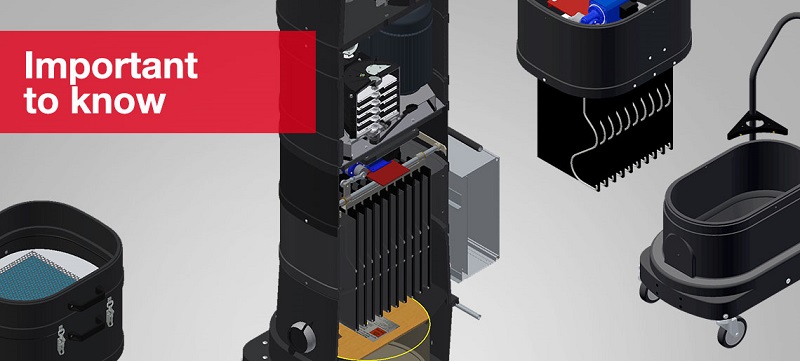Ruwac Asia Blog
Whats important when making an inquiry for a dust control system ?
- February 1, 2018
- Inquiry Guide
“I have a lot of dust in my factory”
“My dust collection system does not work well”
“I have too many rejects of my products due to dust contamination”
Dear Reader does this sound familiar to you?
These are typical statements from our customers, when they first contact us for help.
Chances are that you already made a similar experience and that your current dust collectors and vacuums don’t realy perform as you expected.
The reason for any unsuccessful dust collection project always is a lack of planning.
Purchasing such machinery without very good planning and maybe primarily based on an attractive offer price will in most cases be costly at the end and can also result in serious safety problems such as fires, dustexplosions and exposure of workers to harmful finedust.
Some simple vacuums might be usable in the beginning but in the long run the maintenance costs, costs for frequent replacements and low efficiency will quickly outweigh the advantage of a low initial purchase price.
In order to make your dust control implementation project a success right from the start, consider the following checklist:
1. Setting a dust control policy
Dedusting at source, Extraction of airborne dust and Vacuum cleaning of surfaces are the correct measures for efficient dust control in factories according to European, US and other regions standards.
Airgunblowing and manual sweeping are unsafe methods, which are also inefficient and require too much manpower.


2. Existing dust control systems
Whether it is a dust collector or an industrial vacuums: the performance of any such machine is always measured as airvolume and mbar at suction point.
Existing systems should be thoroughly examined and airvolume data documented.
The motor power or rpm of the dust collector are only an indication of its performance but cannot give you the real data.
Such must be measured right at the suction point.
The WE (Workplace Exposure ) of harmful dust in the air must be measured and documented as well.
3. Regulations and defining standards
The applicable local or international standards and regulations for your work environmen must be studied and documented.
In order to do that, certain knowledge should be acquired first:
What is WEL?
How to measure this and for which substances in my workplace are these limits applicable ?
What is ATEX and how to make an ATEX zoning plan ?
How can I find the relevant information about my substances such as particle size, density, special properties, minimum ignition energy or ST class?
4. Data collection
Before an inquiry can be made, a lot of data must be collected first.
These are information about suction media, operation environment, ATEX zone, application category, capacities and many more.
Once this is done, expert help is required to establish the most important information:
The required performance at suction point in mbar and cbm (Working Point).
Planning is the first step of any dust collection project and is the responsibility of the customer.
Only with complete and correct data, any supplier can propose a working solution.






















